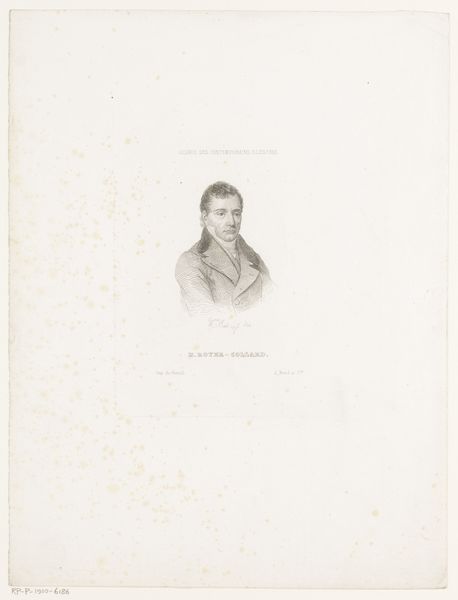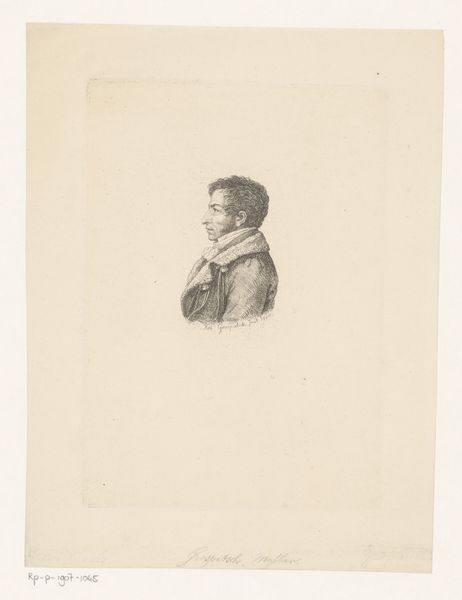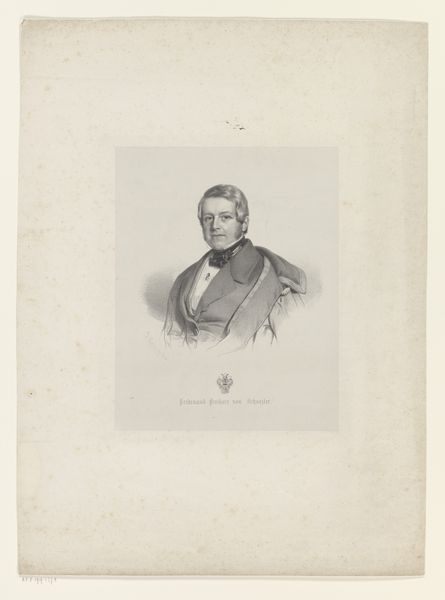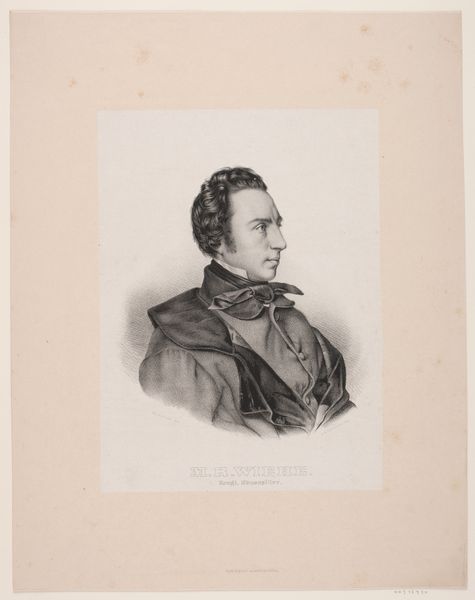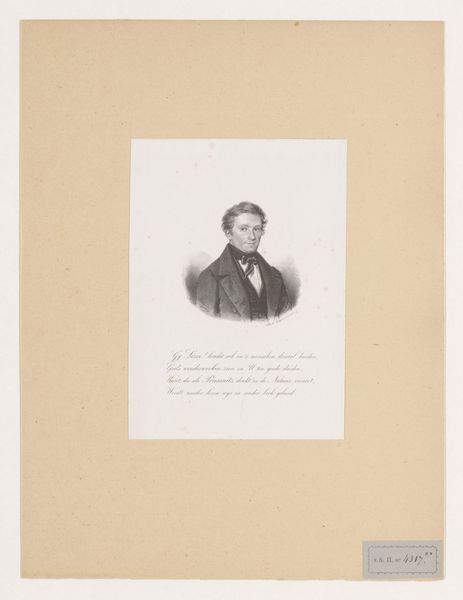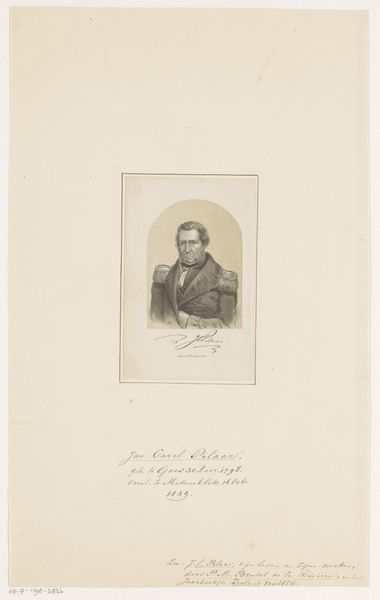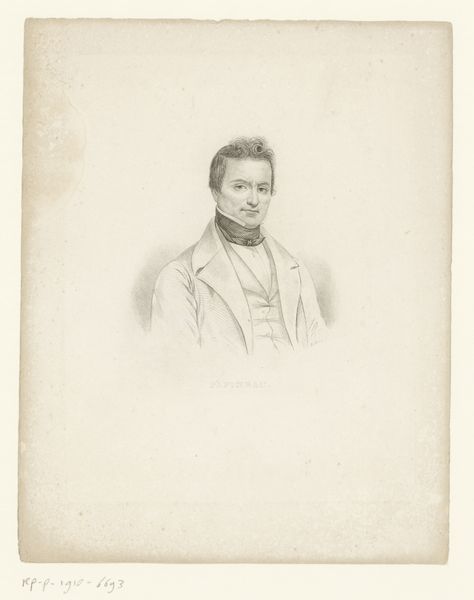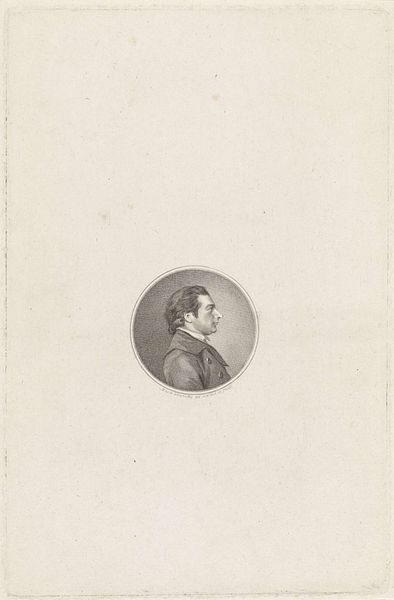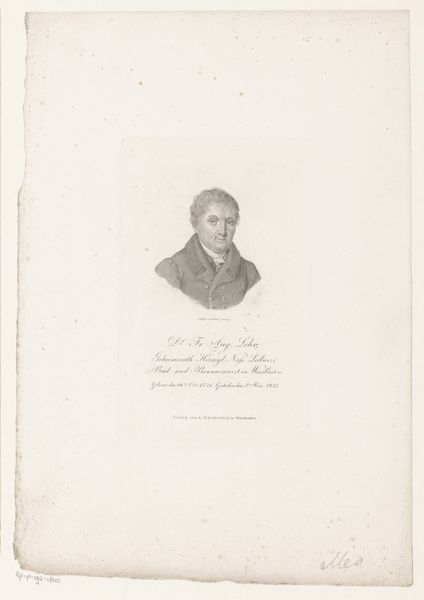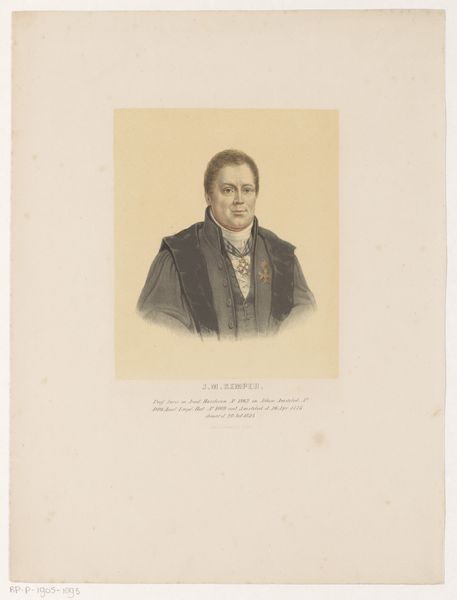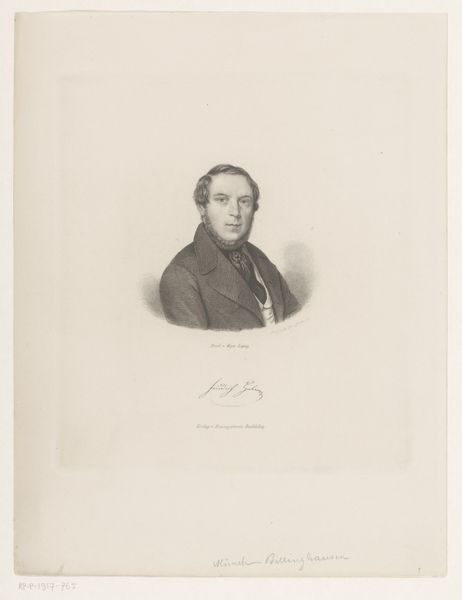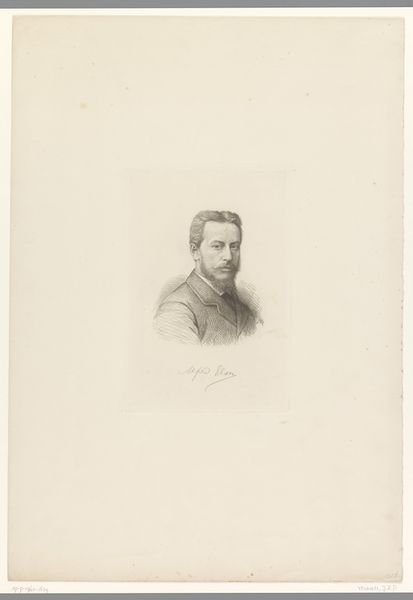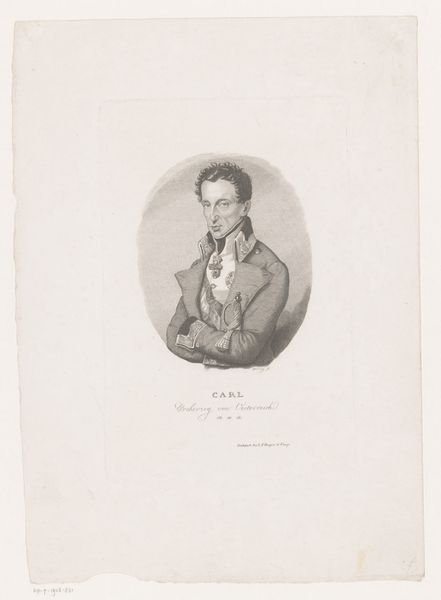
drawing, pencil, graphite, engraving
#
portrait
#
pencil drawn
#
drawing
#
pencil sketch
#
pencil
#
graphite
#
pencil work
#
engraving
#
realism
Dimensions: height 326 mm, width 232 mm
Copyright: Rijks Museum: Open Domain
Adolphe Torlet made this portrait of José María Queipo de Llano Ruiz de Saravía using lithography. Lithography involves drawing an image with a greasy crayon on a stone or metal plate, then applying ink, which sticks only to the greasy areas, and finally transferring the image to paper. This process allowed for the relatively quick reproduction of images, democratizing visual culture in the 19th century. Look closely and you can see the subtle gradations and fine lines achieved through this method. The choice of lithography speaks volumes about the changing landscape of art production during the industrial era. While traditional portraiture often involved lengthy sittings and the costly labor of a skilled painter, lithography offered a more accessible and efficient means of creating likenesses. This shift reflects a broader trend towards mass production and the commodification of art, challenging established notions of artistic value and craftsmanship. By focusing on the materials and processes behind this portrait, we gain a deeper appreciation for its historical context and the evolving relationship between art, labor, and society.
Comments
No comments
Be the first to comment and join the conversation on the ultimate creative platform.
